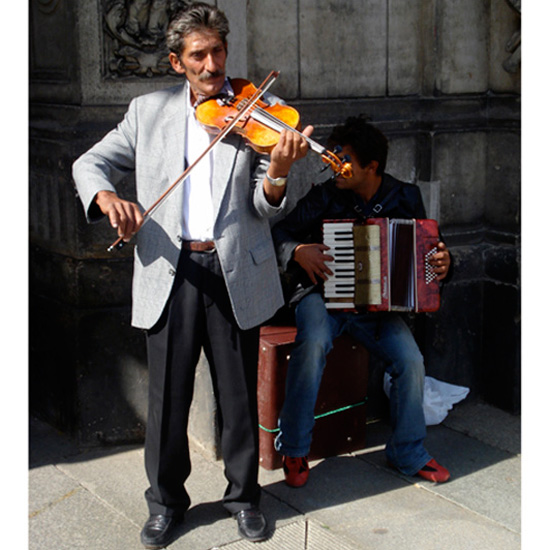|
From Wikipedia: Dresden is the capital city of the free state of Saxony in Germany. It is situated in a valley on the River Elbe, near the Czech border. The Dresden conurbation is part of the Saxon Triangle metropolitan area.
Dresden has a long history as the capital and royal residence for the Electors and Kings of Saxony, who for centuries furnished the city with cultural and artistic splendour. The city was known as the Jewel Box, because of its baroque and rococo city centre. A controversial Allied aerial bombing towards the end of World War II killed thousands of civilians and destroyed the entire city centre. The impact of the bombing and 40 years of urban development during the East German communist era have considerably changed the face of the city. Some restoration work has helped to reconstruct parts of the historic inner city, including the Katholische Hofkirche, the Semper Oper and the Dresdner Frauenkirche. Since the German reunification in 1990, Dresden has regained importance as one of the cultural, educational, political and economic centres of Germany.
Dresden in the 20th century was a leading European centre of art, classical music, culture and science until its complete destruction on 13 February 1945. Being the capital of the German state of Saxony, Dresden had not only garrisons but a whole military borough, the Albertstadt. This military complex, named after Saxon King Albert, was never targeted in the bombing of Dresden.
After the Second World War, Dresden became a major industrial centre in the German Democratic Republic (former East Germany) with a great deal of research infrastructure. Many important historic buildings were rebuilt, including the Semper Opera House, the Zwinger Palace and a great many other historic buildings, although the city leaders chose to reconstruct large areas of the city in a "socialist modern" style, partly for economic reasons, but also to break away from the city's past as the royal capital of Saxony and a stronghold of the German bourgeoisie. However, some of the bombed-out ruins of churches, royal buildings and palaces, such as the Gothic Sophienkirche, the Alberttheater and the Wackerbarth-Palais were razed by the Soviet and East German authorities in the 1950s and 1960s instead of being repaired. Compared to West Germany, the majority of historic buildings were saved.
Dresden is seeking to regain the kind of cultural importance it held from the 19th century until the 1920s, when it was a centre of art, architecture and music. Richard Wagner had a number of his works performed for the first time in Dresden. During that period, other famous artists, such as Ernst Ludwig Kirchner, Otto Dix, Oskar Kokoschka, Richard Strauss, Gottfried Semper and Gret Palucca, were active in the city. Dresden is also home to several important art collections, world-famous musical ensembles, and significant buildings from various architectural periods, many of which were rebuilt after the destruction of the Second World War.
|






















